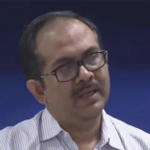Harnessing Big Data for Precision Medicine and Healthcare
Harnessing Big Data for Precision Medicine and Healthcare
Workshop Series Organized by Leibniz AI Lab
Thank you, to our speakers and to all attendees. We hope you enjoyed the workshop as much as we did. The recordings will soon be uploaded on our website. Follow us on our social platforms for updates.
Scroll down to find the schedule below.
Medical research, diagnostics and therapy are increasingly IT-supported and networked. Huge amounts of heterogeneous routine care data are already being collected in hospitals, e.g., in intensive care units, as well as in primary care institutions and by citizens in their personal environments. In addition, the use of genomics, metabolomics and other omics data can provide insights into the development of illnesses and suitability for specific treatments, which enables individualized therapies and treatment. Through our series of workshops in Leibniz AI Lab we aim to build a community involving researchers from machine learning, AI, biology, medical professionals and more to address the shared questions.
The main topics for our first workshop on June 10-11, 2021 include
Computational Methods in Medicine
Mental Health
Databases/Dataintegration/Medical Text and Data Mining
Epidemiology
Confirmed Speakers
Althoff
Frieling
Ghosh
Hoehndorf
Li
Marathe
Menon
Mukherjee
Peruani
Rodriguez
Rosenhahn
Samanta
Sano
Schulz
Wulff
Technical Support
Boneß
Rashid
Schedule list
| Speaker | Video | Time (CET) | |
|---|---|---|---|
| Session: Computational Methods in Medicine | |||
| Introduction to Future Lab | L3S Future Lab June 2021 Intro | June 10 | 9:00-9:10 |
| Yang Li | not available | June 10 | 9:15-9:45 |
| Bodo Rosenhahn | Bodo Rosenhahn's talk | June 10 | |
| Bidisha Samanta | Bidisha Samanta's talk | June 10 | |
| Manuel Gomez Rodriguez | Manuel Gomez Rodriguez' talk | June 10 | 11:15- 12:05 |
| Session: Mental Health | |||
| Helge Frieling | Helge Frieling's talk | June 10 | 3:00-3:35 |
| Surjya Ghosh | Surjya Ghosh's talk | June 10 | 3:40-4:15 |
| Akane Sano | Akane Sano's talk | June 10 | |
| Tim Althoff | Tim Althoff's talk | June 10 | |
| Session: Medical Text and Data Mining | |||
| Robert Hoehndorf | Robert Hoehndorf's talk | June 11 | 9:00-09:50 |
| Stefan Schulz | Stefan Schulz' talk | June 11 | |
| Animesh Mukherjee | Animesh Mukherjee's talk | June 11 | 10:50-11:20 |
| Antje Wulff | Antje Wulff's talk | June 11 | 11:25-12:00 |
| Session: Epidemiology | June 11 | ||
| Fernando Peruani | Fernando Peruani's talk | June 11 | 3:10 - 4:00 |
| Gautam Menon | Gautam Menon's talk | June 11 | 4:05 - 4:55 |
| Madhav Marathe | Madhav Marathe's talk | June 11 | 5:00 – 5:55 |






















